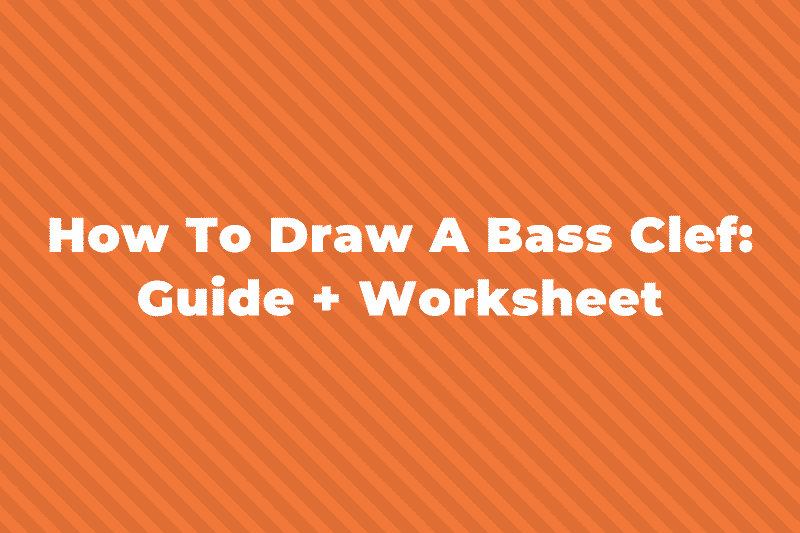Learning to read music is both challenging and exciting. One of the more difficult aspects of reading music is understanding the composers’ intentions.
In this article, I’ll explain exactly what Legato is. We also look at when to use legato, and how you can improve your performance by following the musical notation, and what the difference between legato and tied notes is.
So, What is Articulation?
Before we get to legato, it will help to understand what articulation is in music.
Written languages, like English or French, all have rules of punctuation, so too does music.
These rules are what we refer to as articulation.
Without articulation, your music performance will suffer.
The music will be either very boring or open to broad interpretation.
Without rules, it would be very hard for you to convey the emotion and feeling that the composer had in mind.
Composers use articulation marks to convey to a musician how to sing or play each individual note.
These marks tell you how each note relates to the notes before and after it.
The seven major articulation marks include the legato (slur) and staccato.
What then is the difference between staccato and legato?
Legato or slur is a grouping of smooth, connected notes, while staccato is the opposite, being short and choppy.
Definition of Legato (Slur)
Legato is Italian for “tied together” and it is also referred to as a slur.
This notation indicates that the musical notes are played or sung smoothly and are connected to each subsequent note without a gap or pause.
It’s like writing words in cursive vs each letter on its own.
This produces fluid, flowing phrases that have no silence between each note.
Legato is thus the opposite of staccato, where the notes are short and distinct from one another.
How to Notate Legato
So how do you know when the composer wants you to produce the flowing, connected phrasing associated with legato?
The use of a curved line, starting on the first note and ending on the last note of the connected phrase, indicates a slur or legato.
For example, in the image below, the lines above the notes are telling us to play from the second note D to the Bb at the beginning of the 2nd bar legato and then the Eb to the A in the second bar legato too.

These phrases can be long, covering several bars or as short as between two adjacent notes.
Legato vs Tied Notes
It’s easy for a beginner to get confused between the notation for tied notes and legato, so how do you tell the difference?
At first glance, the tie and legato notations look very alike as for example here is a tied note.

Like a legato marking, it’s a sloped line between two or more notes.
But, the distinction is that ties connect two or more notes of the same pitch, whilst legato or slurs connect notes of different pitches.
It is the tied notes’ durations that are combined and played as a single longer note, combining the rhythmic value of each note.
A tie also has no intervening notes of different pitches.
Each adjoining note is connected to the next without a note between and can also extend from one measure to the next.
It is acceptable to tie more than two notes together, so long as they are of the same pitch.
Composers can also combine both slurs and tied notes in the same section of the music at the same time.
So, the legato marking indicates that the notes must be played in a smooth single phrase, without a break between notes.
Which Instruments Can Play Legato?
Depending on which instrument you’re playing, you can play legato in different ways.
For example, playing legato on bowed instruments such as the violin and cello is achieved through the use of a single movement from start to finish.
Musicians playing wind instruments such as the oboe and flute produce flowing legato by avoiding tonguing each note individually and through exceptional breath control and stamina.
Singers are similar and won’t breathe in between notes or might sing a passage legato using a single syllable.
A pianist can play legato notes in two ways either by using the technique of finger legato, or pedal legato using the sustain pedal.
But, excessive or inappropriate use of the sustain pedal will affect the overall tonal quality and clarity of your performance.
Examples of Legato
Due to the differences in construction, timbre, range of notes, and tuning, different instruments produce a variety of sounds when played legato.
Music composed for string instruments often includes legato phrases where notes of differing pitches are played on the same string to account for a single stroke of the bow.
Guitarists use similar techniques, including hammer-on and pull-offs with their fret-hand.
Pianists achieve a more satisfactory legato by playing the following note a little before the prior key has been lifted.
Woodwind instruments and some brass instruments like the trumpet and French horn excel at producing beautiful, sweeping legato passages with a single breath.
Here’s a good video showing the difference between staccato and legato on the piano.
Famous violinist Itzhak Perlman is famous for his ability to produce sweeping, gorgeous legato phrases, as evidenced by this performance of Vivaldi’s Four Seasons, Concerto No. 4 in F minor, Op. 8: “L’inverno” (Winter).
And finally, here’s a good example of legato played on a brass instrument.
In Conclusion
Mastering legato passages is a lifelong endeavor for amateur and professional musicians alike.
I hope that these tips on the nuances of playing legato passages help to improve your performances in the future.



